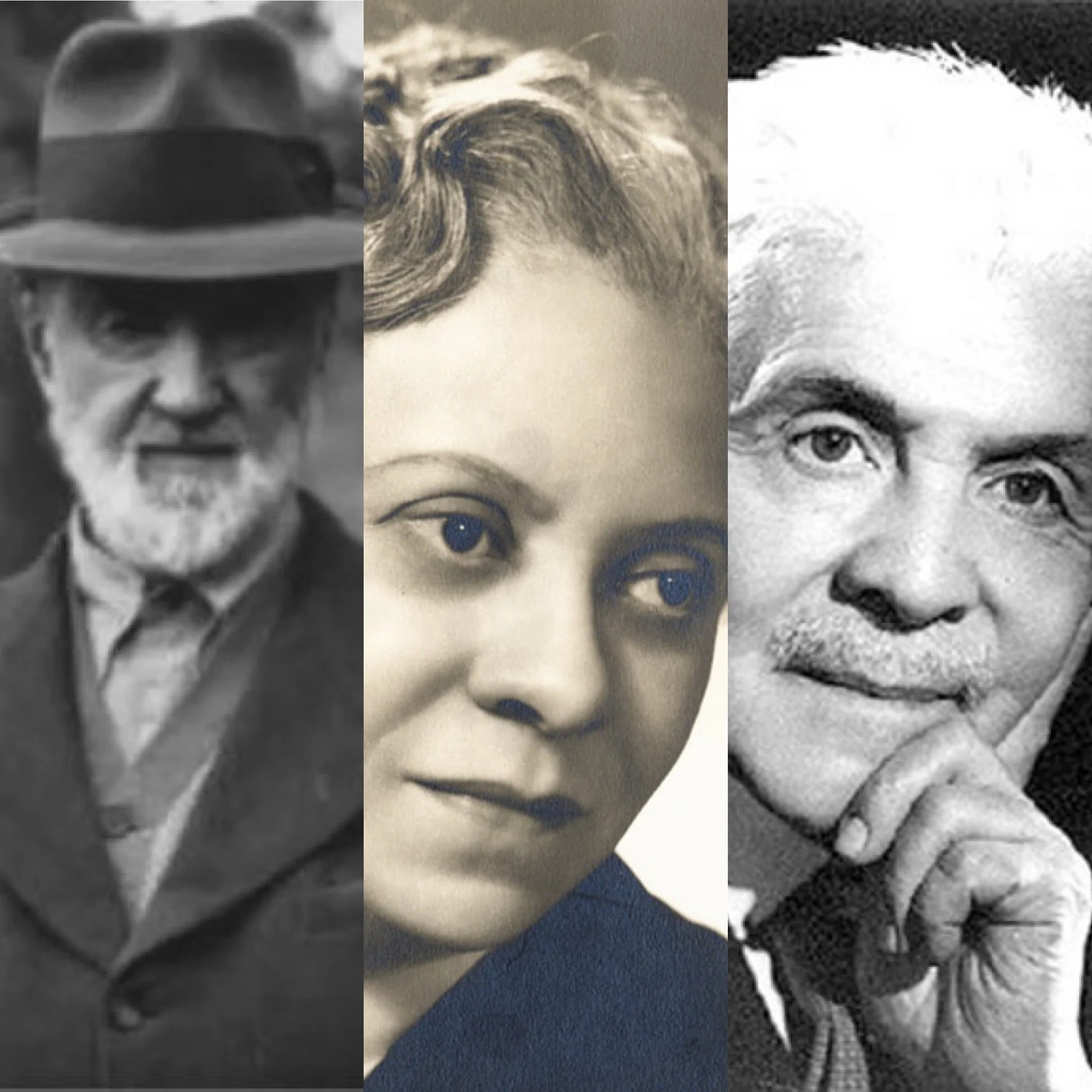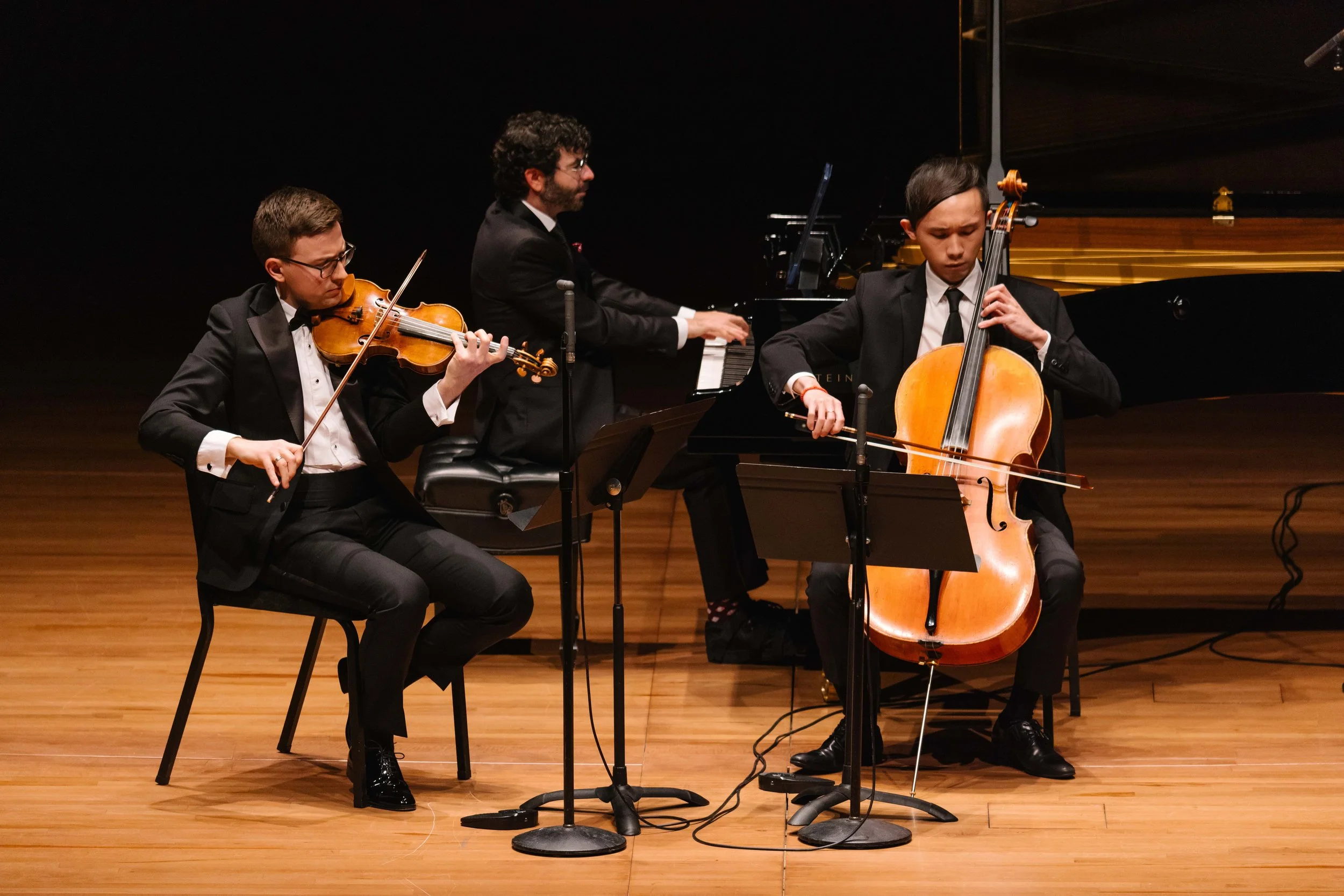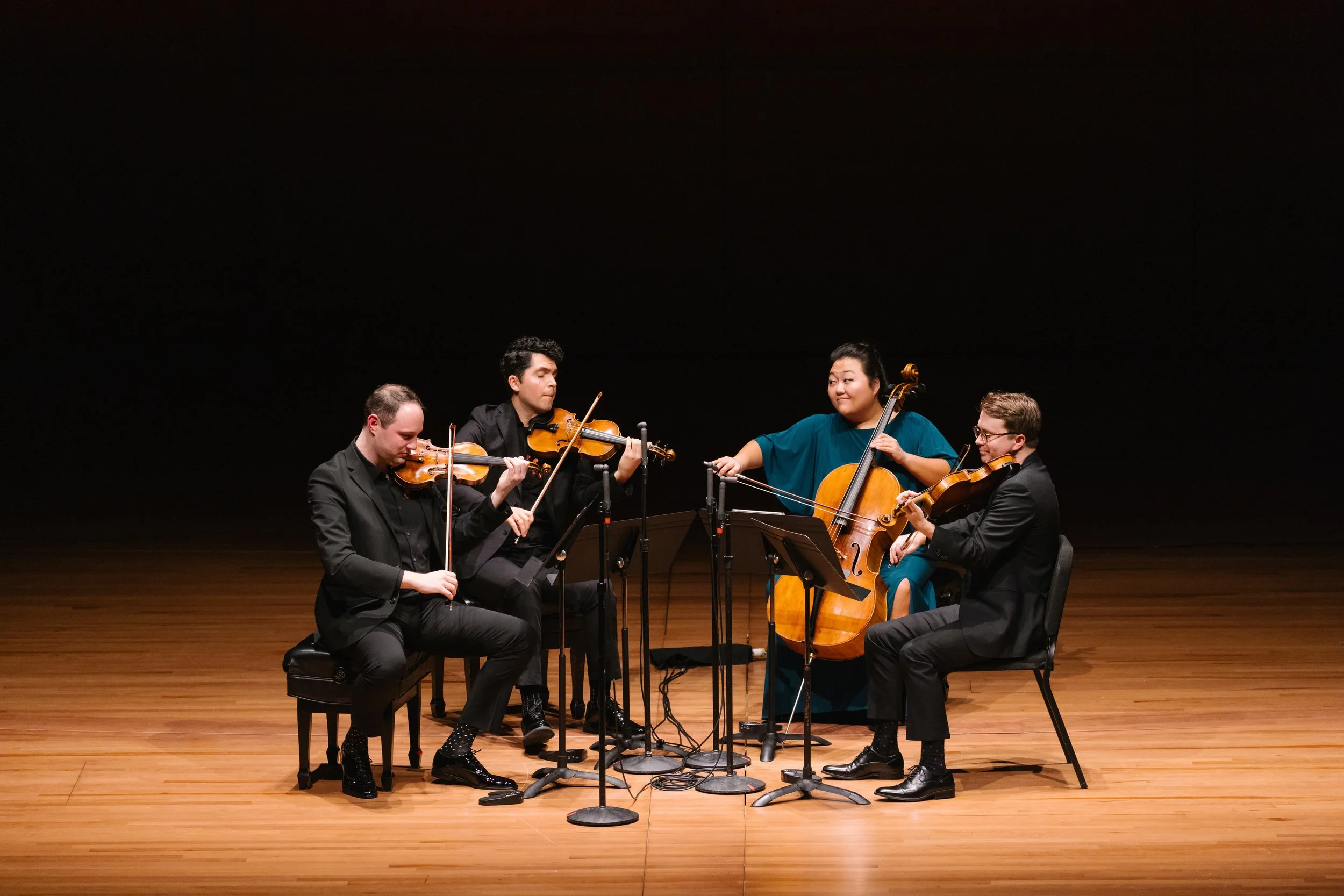REVIEW: Momenta Quartet Celebrates Ives's 150th
October 22, 2024
Something has been missing from concert stages. Eighteenth- and nineteenth century music, distilled to what feels like an increasingly repetitive roster of warhorses, dominates programming, while twentieth century — especially American — composers are too rarely featured.
Thankfully, I learned about the Momenta Festival, the Momenta Quartet’s series of four member-curated concerts celebrating the 150th birthday of one of America’s true originals, Charles Ives. The third concert in the Momenta Festival IX: Ives at 150 series, in the grand salon of the Americas Society’s neo-Federalist Park Avenue townhouse, was called Found. Curated by violinist Alex Shiozaki, Ives’s Piano Trio was rescued from relative obscurity along with chamber music by two other composers recently rediscovered: Julián Carrillo and Florence Price.
The superb Momenta Quartet — violinists Emilie-Anne Gendron and Alex Shiozaki, violist Stephanie Griffin, and cellist Michael Haas — are recording a complete cycle of the quartets of Mexican composer Julián Carrillo, and opened the evening with Carrillo’s String Quartet No. 8. This late-career composition from 1959 makes prominent use of Carrillo’s specialty, microtones, which the composer dubbed “The Thirteenth Sound.” Incorporating quarter-tones — the notes in between the piano’s black and white keys, that is — into an eclectic, advanced harmonic language makes for a rich, complex means of expression, and demands technique of the highest order to make convincing.
Momenta Quartet nailed the tightrope walk in a hypnotically persuasive reading of Carrillo’s striking score. The work’s four movements are built from neo-Baroque textures and textile-like patterns, but divorced from familiar harmonic tropes, evocative of the elements of nature, or the music of wild animals. Momenta’s players maintained remarkable consistency of line and integrity of rhythm — never slackening in trepidatious syncopations — and crucially, using the additional scale tones to emphasize the yearning and passion in Carrillo’s music.
Momenta Quartet
Guest artist, Nana Shi, joined on piano for equally excellent accounts of the Ives Piano Trio and Price’s Piano Quintet in A Minor. My first response upon hearing Ives tends to be that it sounds like it was written by an insurance salesman. But, of course, this is only half the story. Ives, being raised by a professional musician, knew better than to hinge his livelihood on a career in music, even in late-nineteenth century New England. The lucrative insurance business made him rich, and he was free to bang at the piano and experiment as he pleased.
The result was music that skirted the developments of the musical establishment, presaging and foreshadowing colors later composers would employ in the future. The Piano Trio from 1911 exemplifies this, in three movements that defy any audience’s expectations. The first movement, Moderato, could be mistaken for Schoenberg, until it eventually resolves to a C major chord after a protracted philosophical argument. The middle movement, a scherzo called TSIAJ ("This scherzo is a joke"), would have made Stravinsky proud. Juxtaposing American folk tunes and hymns with nonsensical noodling, it requires matter-of-fact rhythmic incisiveness, delivered crisply by Momenta.
As for Ives’s sense of humor, I’m afraid I didn’t detect much laughter from the audience to this “joke.” Perhaps, modern sensibilities are hardened to cacophony. Ives’s creations are often art about music, rather than music for music’s sake.
The finale, Presto Moderato con moto, is more relatable; a fanfare of Copland-esque open fifths soon interrupted by Grieg-esque minor-keyed lyricism, drawn into late-German-Romantic delayed gratification, and eventually, a melting pot of every mode under the sun — an overwhelming statement made cohesive by Momenta’s soaring strings and Shi’s ability to keep various planes of texture afloat, like a juggler.
Price’s 1935 Piano Quintet, not published until 2001, is also a casserole of musical influences, the main ingredients being African-American spirituals and a chromatic harmonic palette with the expressiveness of a Massenet or Puccini opera. Momenta’s interpretation highlighted the tidy form and balanced classicism in Price’s well-crafted score. The last two movements, Juba, a stomping two-step, and the finale, a minor-keyed tarantella-like Scherzo, struck me as being in the wrong order, but other than a slight recalibration of the drive to the end, it’s hard to imagine a more glowing performance of Price’s quintet.






